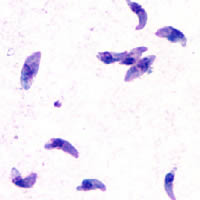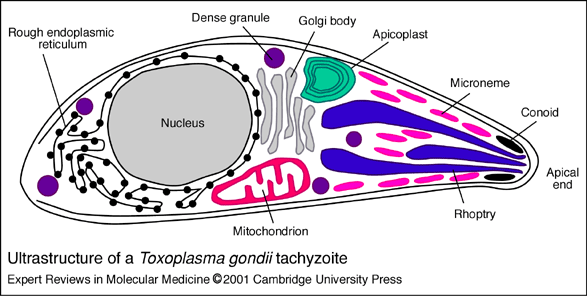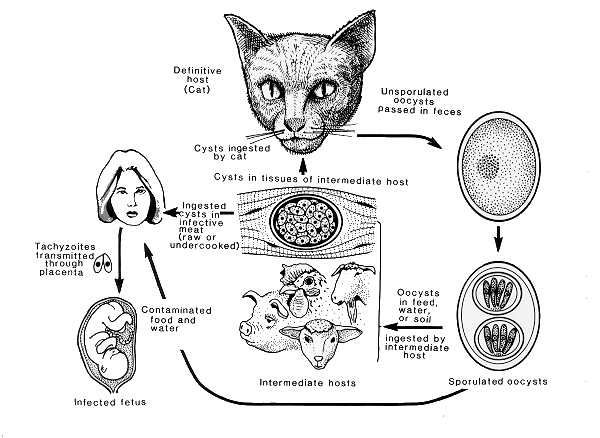Toxoplasma gondii
For the course duration, the article is closed to outside editing. Of course you can always leave comments on the discussion page. The anticipated date of course completion is May 21, 2009. One month after that date at the latest, this notice shall be removed. Besides, many other Citizendium articles welcome your collaboration! |
| Toxoplasma gondii |
|---|
 |
| Scientific classification |
|
|
Description and significance
Toxoplasma gondii is a single celled organism that is known for being the cause of Toxoplasmosis, a common food born illness. T. gondii is a unicellular, parasitic protist, classified as an apicomplexan within the group alveolate. Apicomplexans are exclusively parasitic organisms and derive their name from their apical complex. T. gondii need moisture to avoid dessication, and therefore take up residence in mammalian body fluids. They share many similarities with their close relative plasmodium, the parasite responsible for malaria.
Structure, Multiplication, and Life Cycle
Cell Structure
T. gondii is a unicellular protist with an amorphous amoeboid-like body form. They have no flagella or other motility structures but move by amoeboid motion. The plasma membrane is surrounded by a cell wall. Although they do not have a contractile vesicle they have alveoli just below their plasma membrane. These alveoli are subcellular cavities characteristic of many protists that are important for stabilization of the cellular surface. The apical end of their spores, as can be seen from the image below, contains a mass of organelles that help the spores invade their host tissue.
Genome structure
The complete circular T. gondii genome was sequenced by The University of Pennsylvania in 2006 using the Random Shot-gun method. The size of the genome is reported to be 34,996nt long. Of the entire genome, fifty two percent codes for proteins. Of the 63 genes present, 37 encode structural RNAs and 26 code for other proteins. The GC content of the genome is reported as twenty-one percent.
Use the following link to view the complete genome of T. gondii according to gene location.
[1]
Life cycle
Much like its close relative plasmodium, toxoplasma gondii has a complex life cycle that alternates between sexual and asexual stages. The various stages of it's life cycle take place in different organisms, cycling between cats and the animals they eat. The cat releases T. gondii oocytes in its feces, which get picked up by ingestion by another animal. Once the oocytes enter this new host they hatch, allowing the parasite to move through the hosts body.

